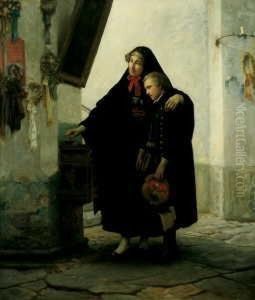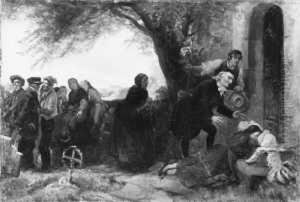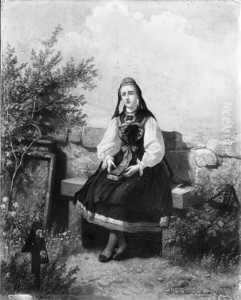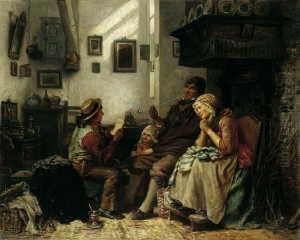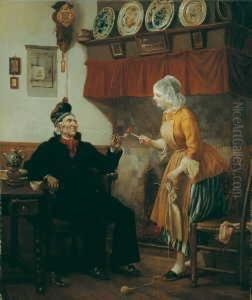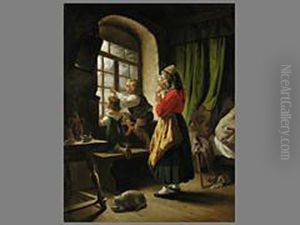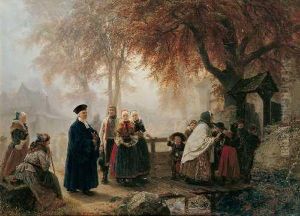Carl Hubner Paintings
Carl Hubner, born on June 17, 1814, in Königssee, Germany, was a notable 19th-century German genre painter who became renowned for his intricate and often socially charged depictions of everyday life, as well as his historical and literary subjects. His works are characterized by a detailed realism and a skillful portrayal of his subjects' emotions and narratives.
Hubner studied at the Dresden Academy of Fine Arts, where he honed his artistic skills and developed a style that combined academic painting techniques with a keen observation of human interactions and contemporary issues. His academic background provided him with a solid foundation in drawing, composition, and the handling of color, which he utilized throughout his career to create evocative scenes that resonated with viewers.
Throughout his career, Carl Hubner gained recognition for his ability to capture the essence of the working class and their environments. His paintings often included peasants, artisans, and laborers, depicted with a sense of dignity and respect. In addition to these genre scenes, Hubner's oeuvre included historical paintings, which showcased his ability to recreate past eras with accuracy and dramatic flair. His historical works often reflected his interest in German history and literature, and he sometimes drew inspiration from the works of German writers such as Goethe and Schiller.
Hubner's paintings were well-received in his time, allowing him to build a successful career as an artist. He exhibited his work at various art exhibitions and was a member of important art associations. His paintings are now held in several museums and private collections, where they continue to be appreciated for their historical value and their portrayal of 19th-century life.
Carl Hubner's influence extended beyond his own paintings, as he also taught and inspired a new generation of artists. His commitment to capturing social realities and the human experience in his art left a lasting legacy in the genre painting tradition. Hubner passed away on November 14, 1879, in Dresden, leaving behind a body of work that continues to be studied and admired for its artistic and cultural significance.
